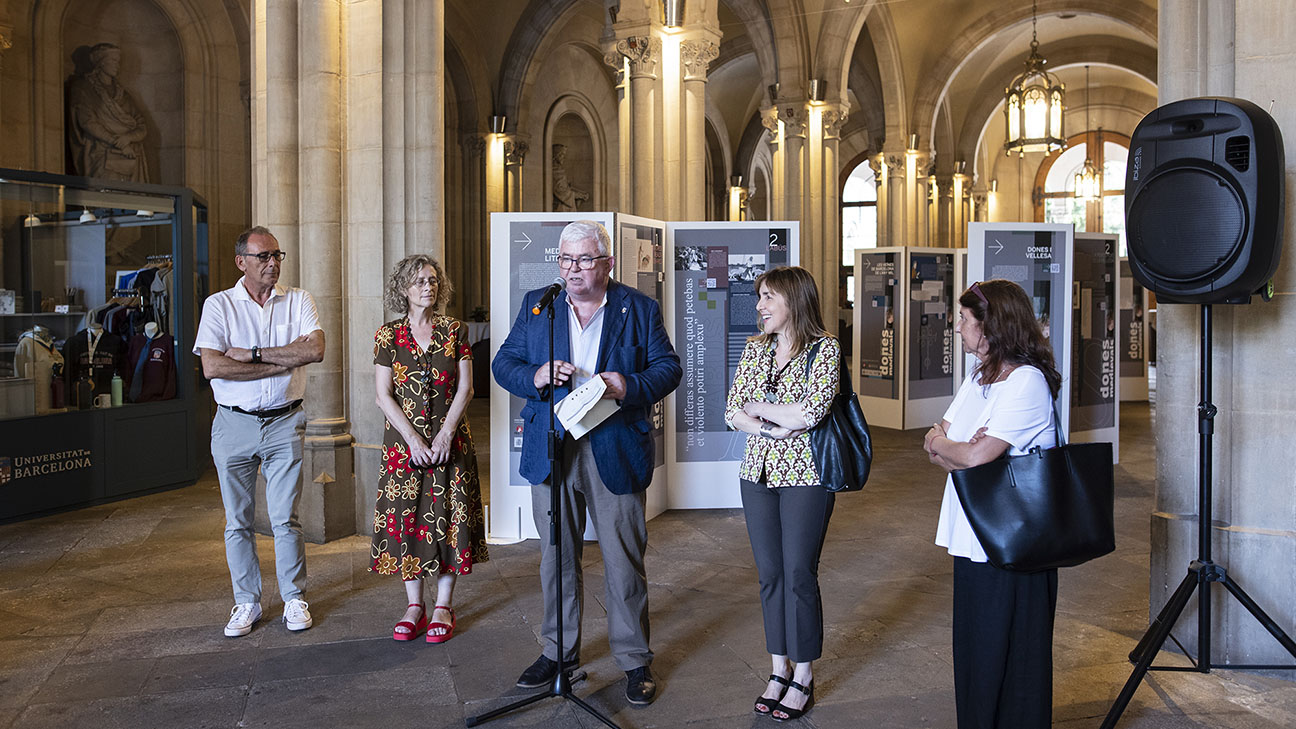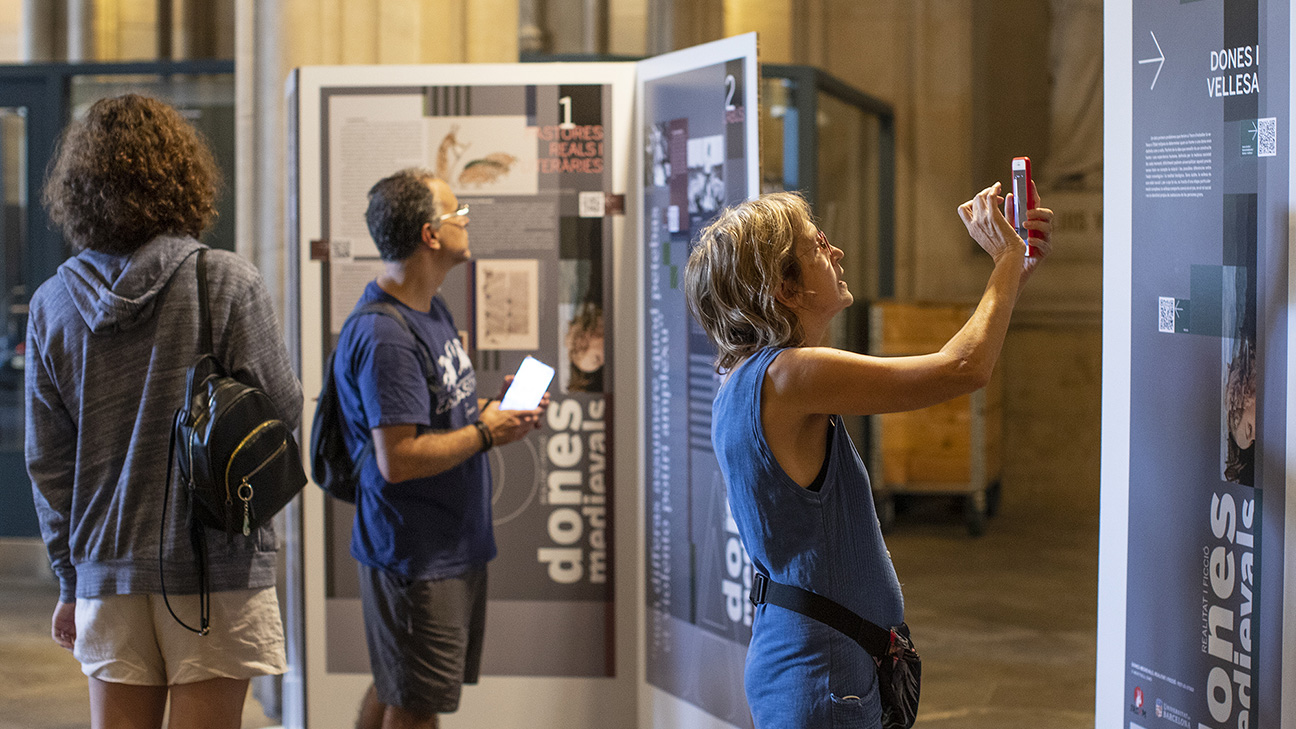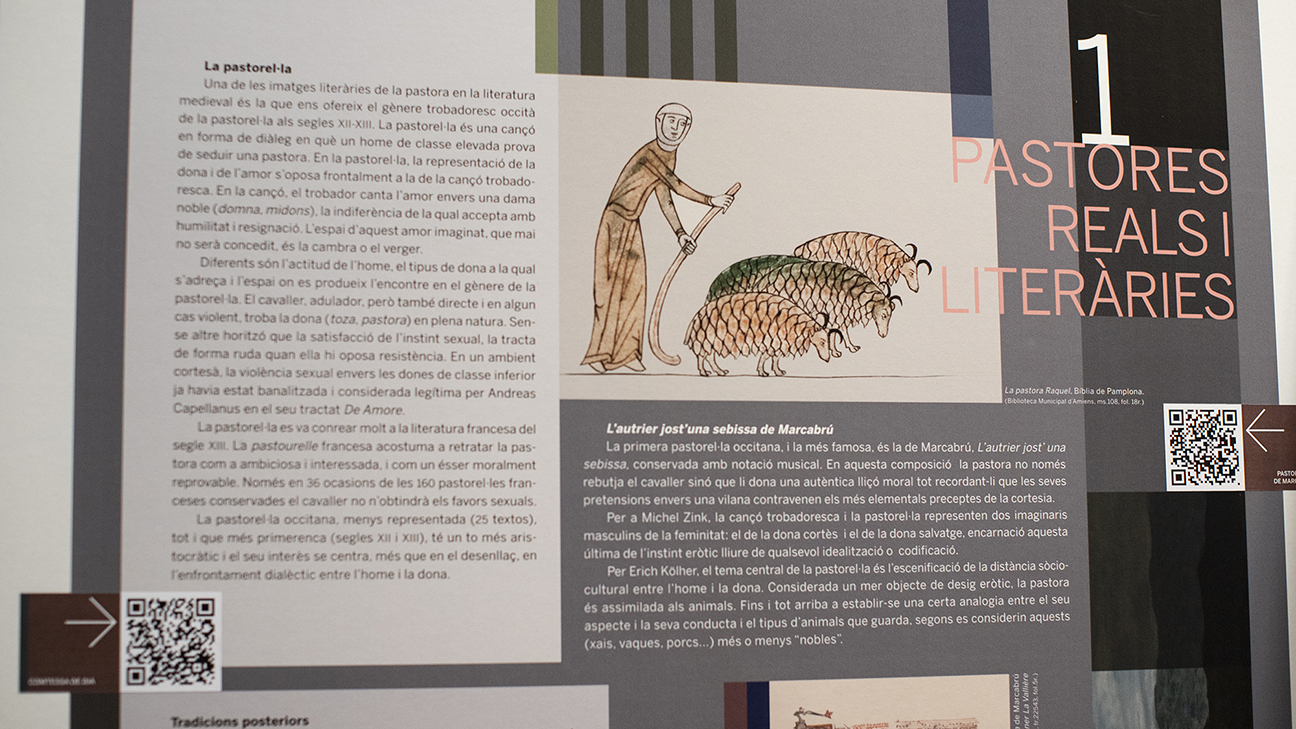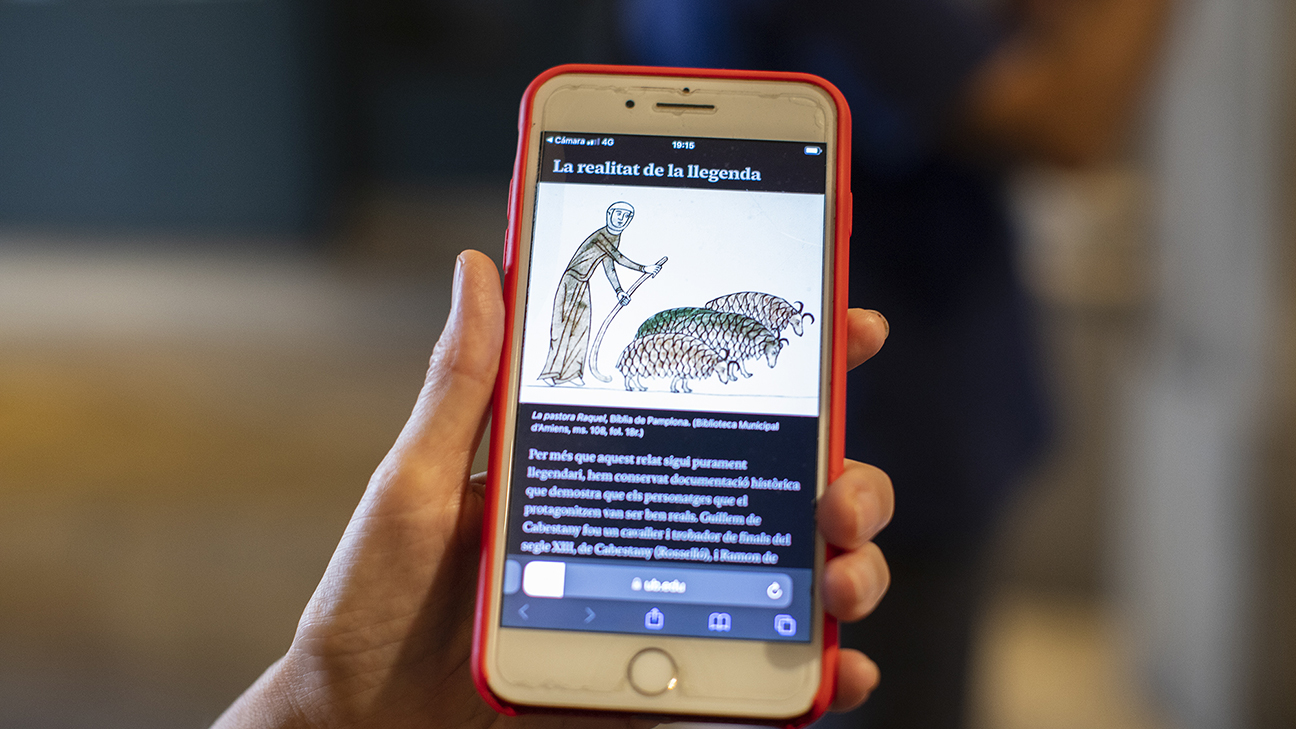Exhibition on medieval women in the hall of the Historic Building


The exhibition, created by the Institute for Research in Medieval Cultures (IRCVM), is part of the project Reality and fiction of medieval women, funded by the Spanish Foundation for Science and Technology (FECYT), which includes five podcasts of the series Dones ni en blanc ni en negre, available on Ivoox and Spotify.
Visitors will find a dual-format exhibition (analogical and virtual), structured into four theme blocs dedicated to literature, the daily life of the Barcelona women in the year 1000, and feminine old age and spirituality. Meritxell Simó, director or IRCVM and lecturer of Romance Languages, says: “With this activity, we present a comparison between the reality of medieval women and the fiction produced by the literature of that time, as well as by our contemporary imaginary on the medieval period, which is usually biased”.
The project Reality and fiction of medieval women aims to turn the past dissemination into a tool for understanding the present from a gender perspective. This is why it presents an interdisciplinary approach to the image of medieval women conveyed by literature and art — past and present —, showing the contrast between fictions elaborated by the literature of the time or the contemporary imaginary of the Middle Ages and the reality uncovered by historical and archival documentation and material vestiges. “Beyond a simple juxtaposition of images, we aspire to deconstruct the stereotypes of the time and gender most widespread in literature, art, film or not very rigorous dissemination, and to show, in a simple and informative way, the complex relationship between the reality of women and their imaginary projections”, says Simó.
This project aims to create synergies and translate in a disseminative way, the task of many research teams that, together in IRCVM, are building a real cluster of studies on women during the Middle Ages. This critical mass allows not only to work on an interdisciplinary approach (archaeology, archival sciences, digital humanities, philology, history…), but also to reach the public through a network of agreements with museums and cultural institutions and several dissemination channels.
The Institute for Research in Medieval Cultures was created in 2008 and it brings together medievalists from various faculties of the UB, in order to be a role model for research on the Middle Ages in Catalonia. With a master's and doctoral program, the Institute combines teaching, dissemination and research. One of its strengths is the editorial policy through which it channels its research. Highlights include the open access journal SVMMA; the IRCVM-Medieval Cultures collection, published with the publishing house Viella de Roma, and the collections Lessons, IRCVM Premis and MVNERA, published by UB Editions.
Multimedia gallery

Visitors in the exhibition.

Exhibition panels.

